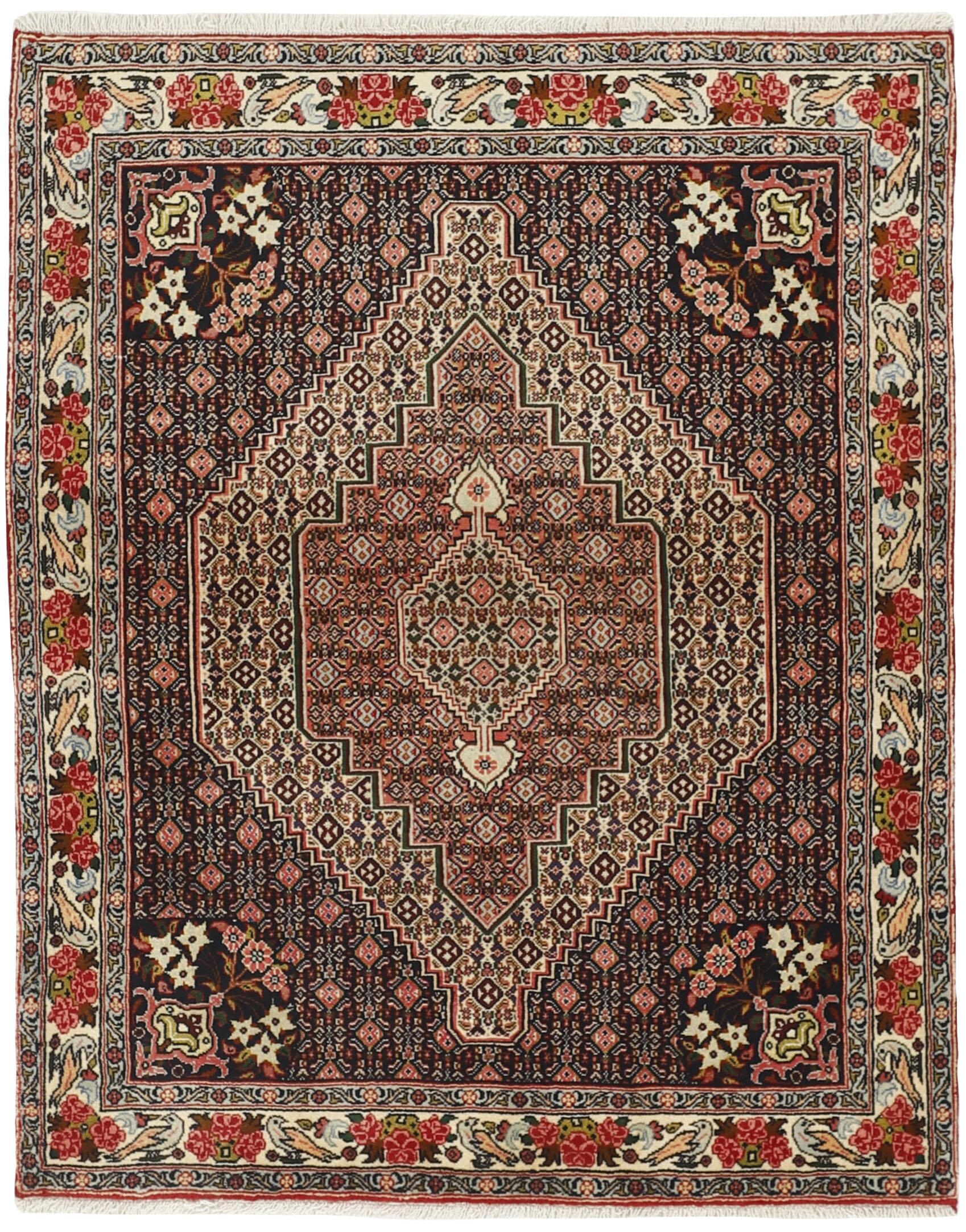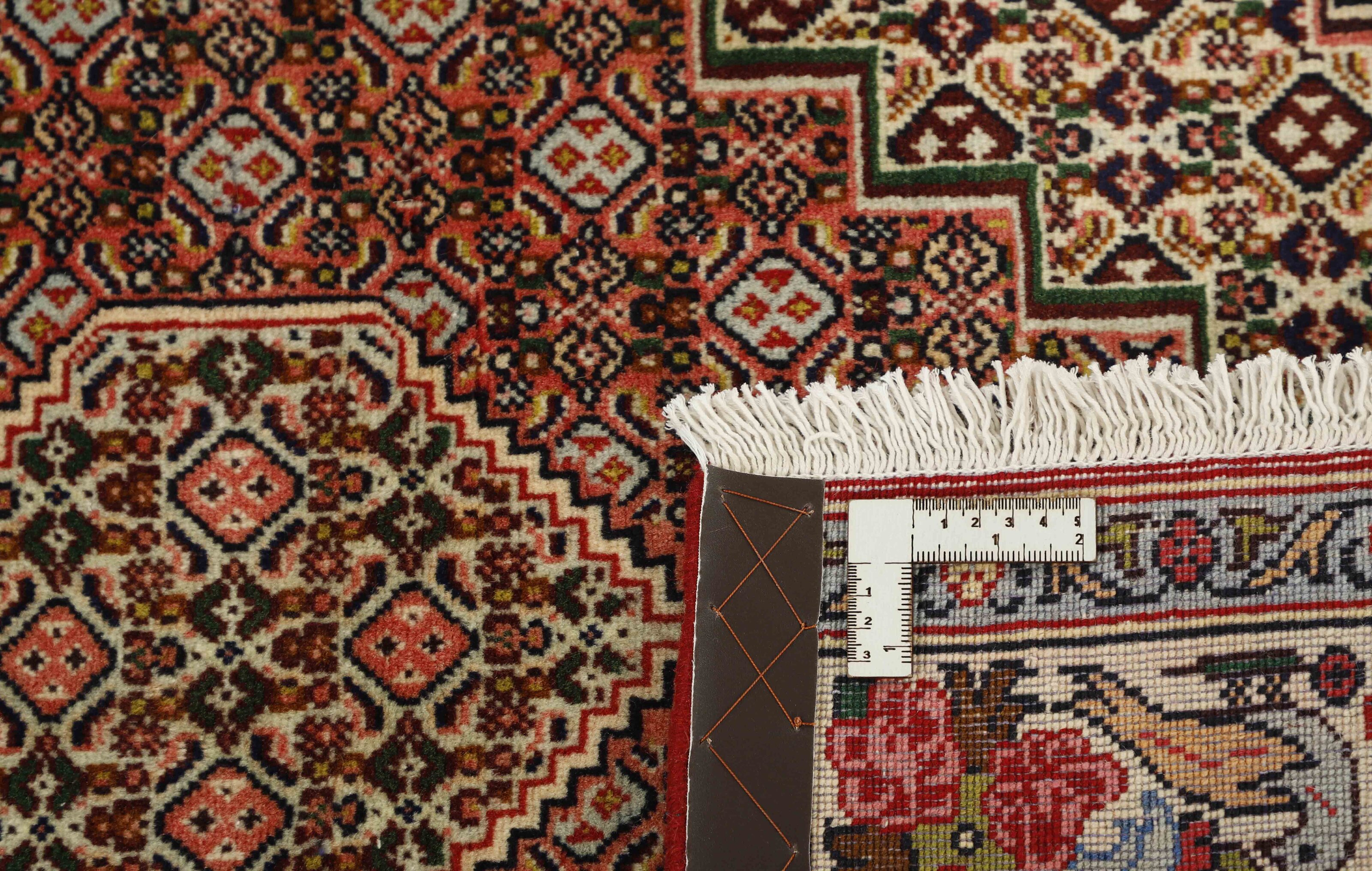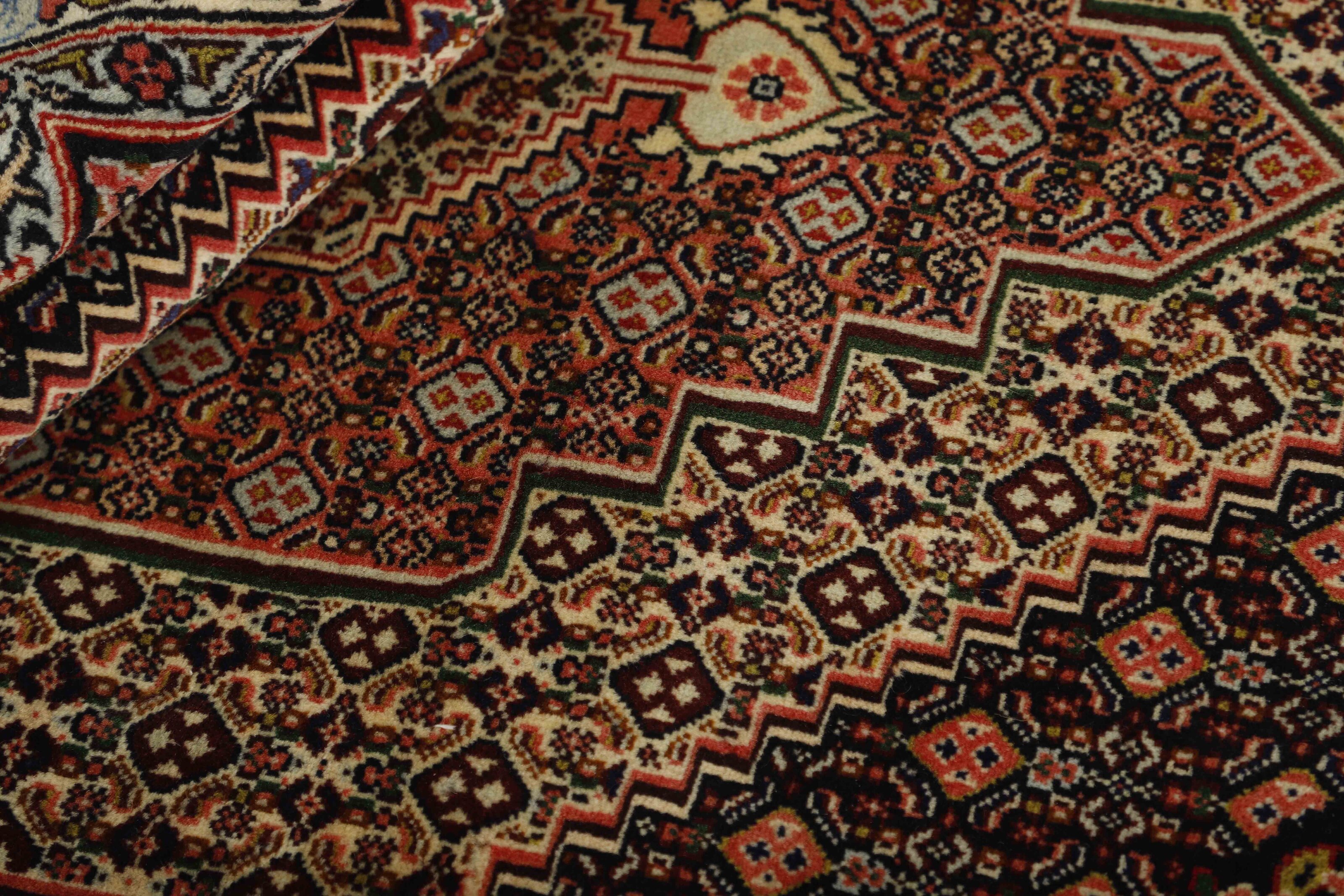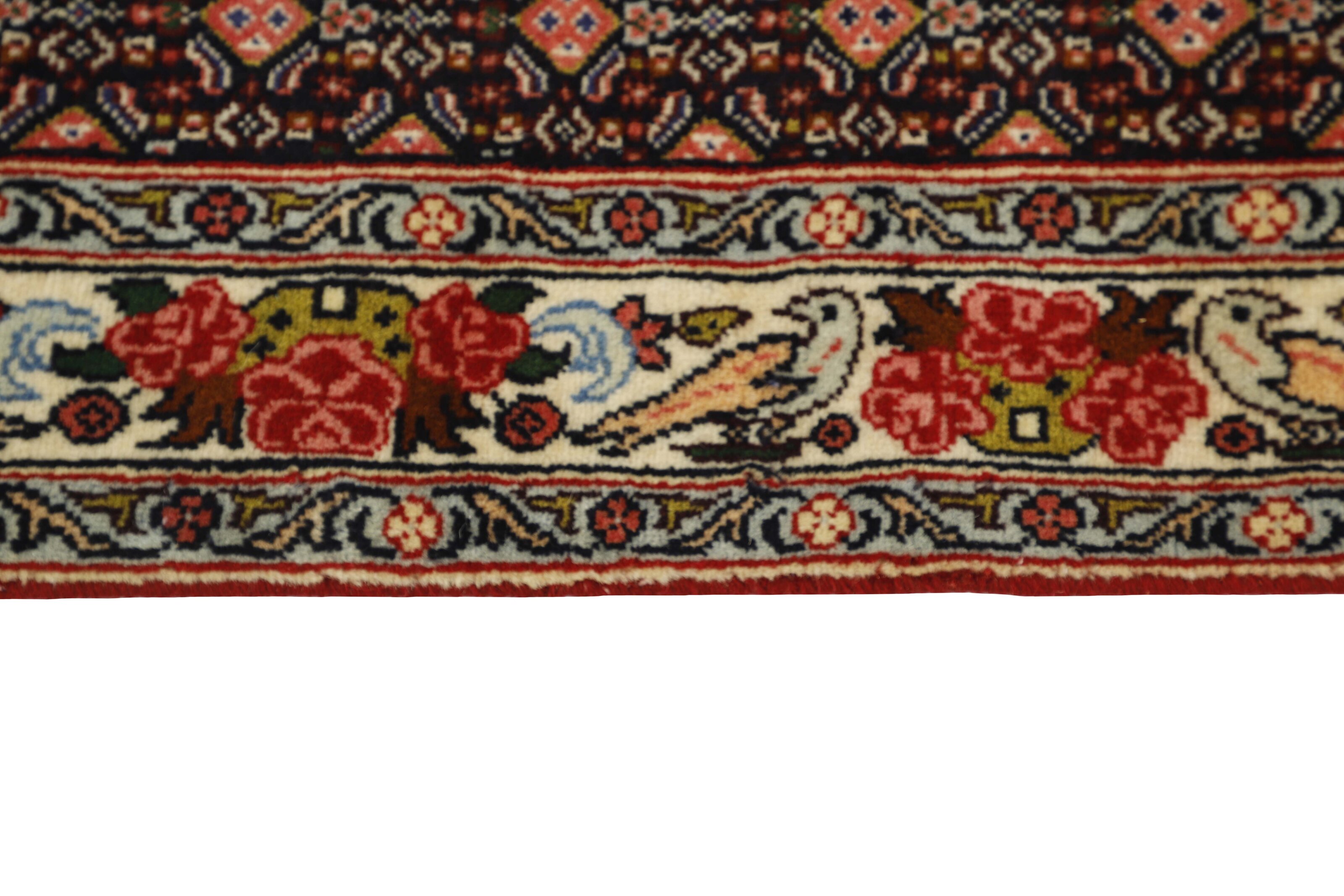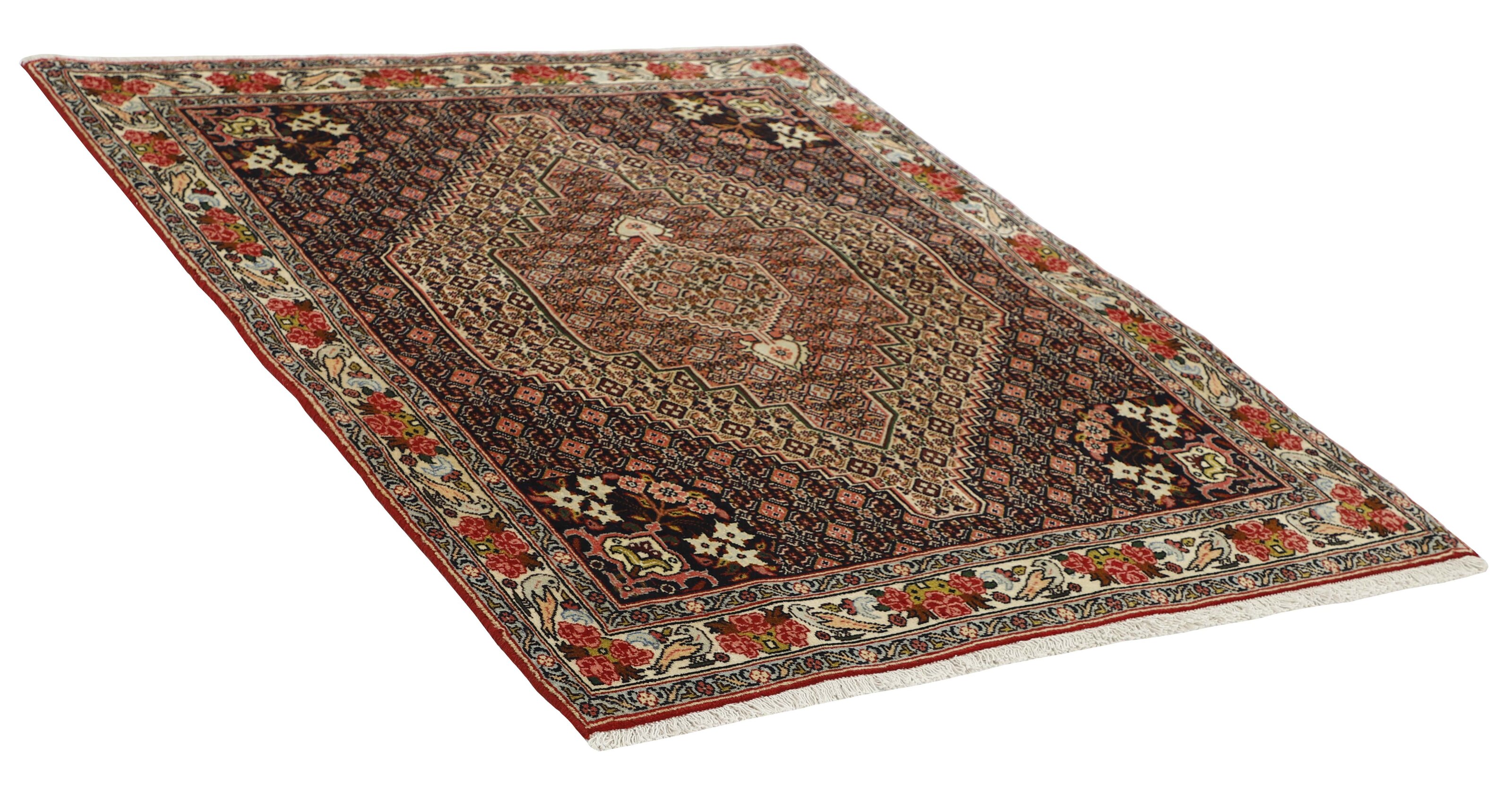Seneh
Seneh
SenehItem no.: 1493021 Size: 124 cm x 155 cmSeneh in Sanadaj is the capitol of the Kurdistan province of north-western Iran, and has about 300.000 inhabitants, most of them Kurds from the Gurani Tribe. Seneh rugs are easily recognisable by their knotting method, as well as the pattern colours and wool used. They usually have a simple weft, and the back of the rugs is often coarse and grainy, as the wool is spun tightly by hand before the knotting. Sometimes, a firm Bidjar-like knotting can be seen. Characteristically, the colours are deep blue, green, dark red, and white. Seneh wool is among the best qualities of wool in Iran: firm and durable, with a deep glow, a result of the high altitude, the sparse vegetation, and extremes in temperature. The tribal knotters in the area use the same type of wool. In the 19th century, Seneh rugs were famous for their fineness and the variation in patterns, while the modern production is less fine and not as varied. The Ghiordis knot is usually used, but you will also encounter rugs from Seneh with the Seneh knot. The typical Seneh rug has a Herati pattern field, with a series of geometrical medallions, one inside the other, each repeating the pattern with a different ground colour. Sometimes, the older, more uniform patterns are seen: Boteh, Vekili, Gol-Farang (naturalistic, European style bundles of flowers) or Gol-i-Bulbul (birds and flowers).
Product specification
- Origin:Persia
- Condition:In very good condition
- Knot density:250-350.000 knots per sqm.
- Pile:Wool
- Age:0-20 years (not used)
- Warp:Cotton
- Manufacturing:Genuine hand knotted rug
- Format:Rectangular
- Square meter:1.92
- Size:124 cm x 155 cm

